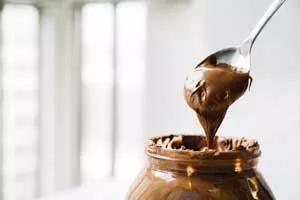
Nintendo to Nutella: UTM course delves into the history of everyday things
From Nutella to Nintendo, a summer history course at U of T Mississauga is challenging students to consider how everyday products fit into capitalist culture.
The History of Capitalism (HIS212H5) is a second-year history course offered over the summer semester. Sessional instructor Dan Guadagnolo takes a creative approach the term project, asking students to research a single commodity to better understand how capitalist ideas, like production, labour and the commodity chain, apply to an object they use every day. “In recent years, history departments have developed ‘object-based classes’ where students write local histories through found objects in their communities," he says. "In this course, students were tasked with picking a commodity with a personal and intimate connection to their lives, and then writing their own history through it.”
Historical studies student Celeste Tyndall, who took the course during the spring semester, focused on Nutella, the popular chocolate-hazelnut spread that was an essential part of her mother’s childhood, while her classmates studied the histories of vegan Dr. Marten shoes; Fiji Water, a 2011 Nintendo Game Boy; and a Yamaha guitar played by a student in his church group.
“My mom is Italian, and remembers being teased as a child for bringing a chocolate sandwich to school,” Tyndall says of her choice. “I wanted to talk about how Nutella was part of the Italian immigration identity, and how it changed to become a global product.”
“I learned that Nutella carries a lot of meaning for different people, from the way the product is marketed as a nostalgic product to individual feelings about the product,” she says. “Reading personal testimonials was the most interesting part of the project. Nutella is a big piece of people’s identity.”
“For many students, this might be their first big research project,” Guadagnolo says. “This assignment really gets them to think about these commodities, which constitute part of who we are, and in the most intimate way, how little we know about them and the history contained in them. This helps them to locate themselves in capitalism, not just as a huge concept but in the mundane choices they make every day.”
The student historians created and answered 30 specific questions about their chosen commodity, considering and identifying materials used to make the products, as well as different labour regimes and how something that might have started as a small family business might grow into a global brand and commodity.
“This was the most challenging part of the project because of the research that went into it, but it’s also the part I’m most proud of,” says Tyndall, whose research ranged from environmental impact data to fan testimonials. “So much information doesn’t make the final cut,” she says. “This course showed the research process in a realistic way—we had to find our own directions, and choose what story we wanted to tell.”
“When you are a historian, you can learn a lot about a tiny sliver of the universe,” Guadagnolo says. “I want to help students understand the debates and tensions we're facing today in contemporary economics, and address larger questions about capitalism and society.”
Tyndall, who is going into her third year of undergraduate studies in the fall, says the course taught her important lessons about the research process. “This was my first major research project that wasn’t a traditional essay,” she says. “I could see how real research in the field of history might take you in a lot of directions, and what being a historian could lead to.”
